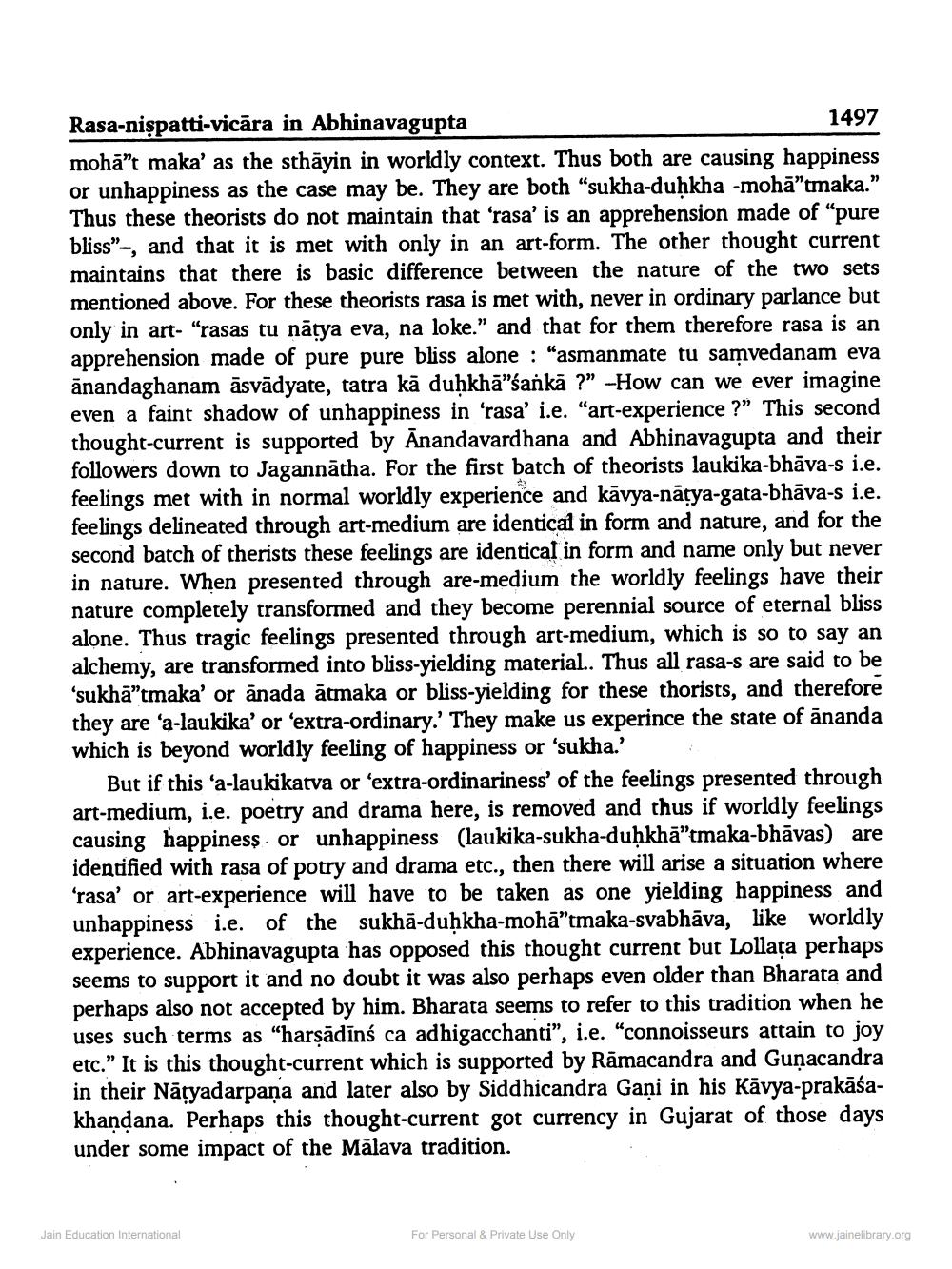________________
Rasa-nişpatti-vicāra in Abhinavagupta
1497 mohā”t maka' as the sthāyin in worldly context. Thus both are causing happiness or unhappiness as the case may be. They are both “sukha-duhkha -mohā"tmaka.” Thus these theorists do not maintain that 'rasa' is an apprehension made of “pure bliss", and that it is met with only in an art-form. The other thought current maintains that there is basic difference between the nature of the two sets mentioned above. For these theorists rasa is met with, never in ordinary parlance but only in art- “rasas tu nārya eva, na loke." and that for them therefore rasa is an apprehension made of pure pure bliss alone : "asmanmate tu samvedanam eva ānandaghanam āsvādyate, tatra kā duhkhā"sankā ?” -How can we ever imagine even a faint shadow of unhappiness in 'rasa' i.e. "art-experience ?” This second thought-current is supported by Anandavardhana and Abhinavagupta and their followers down to Jagannātha. For the first batch of theorists laukika-bhāva-s i.e. feelings met with in normal worldly experience and kavya-nātya-gata-bhāva-s i.e. feelings delineated through art-medium are identical in form and nature, and for the second batch of therists these feelings are identical in form and name only but never in nature. When presented through are-medium the worldly feelings have their nature completely transformed and they become perennial source of eternal bliss alone. Thus tragic feelings presented through art-medium, which is so to say an alchemy, are transformed into bliss-yielding material.. Thus all rasa-s are said to be 'sukhā”tmaka' or anada atmaka or bliss-yielding for these thorists, and therefore they are 'a-laukika' or 'extra-ordinary. They make us experince the state of ananda which is beyond worldly feeling of happiness or 'sukha.'
But if this 'a-laukikatva or 'extra-ordinariness' of the feelings presented through art-medium, i.e. poetry and drama here, is removed and thus if worldly feelings causing happiness or unhappiness (laukika-sukha-duhkhā"tmaka-bhāvas) are identified with rasa of potry and drama etc., then there will arise a situation where 'rasa' or art-experience will have to be taken as one yielding happiness and unhappiness i.e. of the sukhā-duḥkha-mohā”tmaka-svabhāva, like worldly experience. Abhinavagupta has opposed this thought current but Lollata perhaps seems to support it and no doubt it was also perhaps even older than Bharata and perhaps also not accepted by him. Bharata seems to refer to this tradition when he uses such terms as "harşādīns ca adhigacchanti”, i.e. "connoisseurs attain to joy etc." It is this thought-current which is supported by Rāmacandra and Gunacandra in their Natyadarpana and later also by Siddhicandra Gani in his Kāvya-prakāśakhandana. Perhaps this thought-current got currency in Gujarat of those days under some impact of the Mālava tradition.
Jain Education International
For Personal & Private Use Only
www.jainelibrary.org




